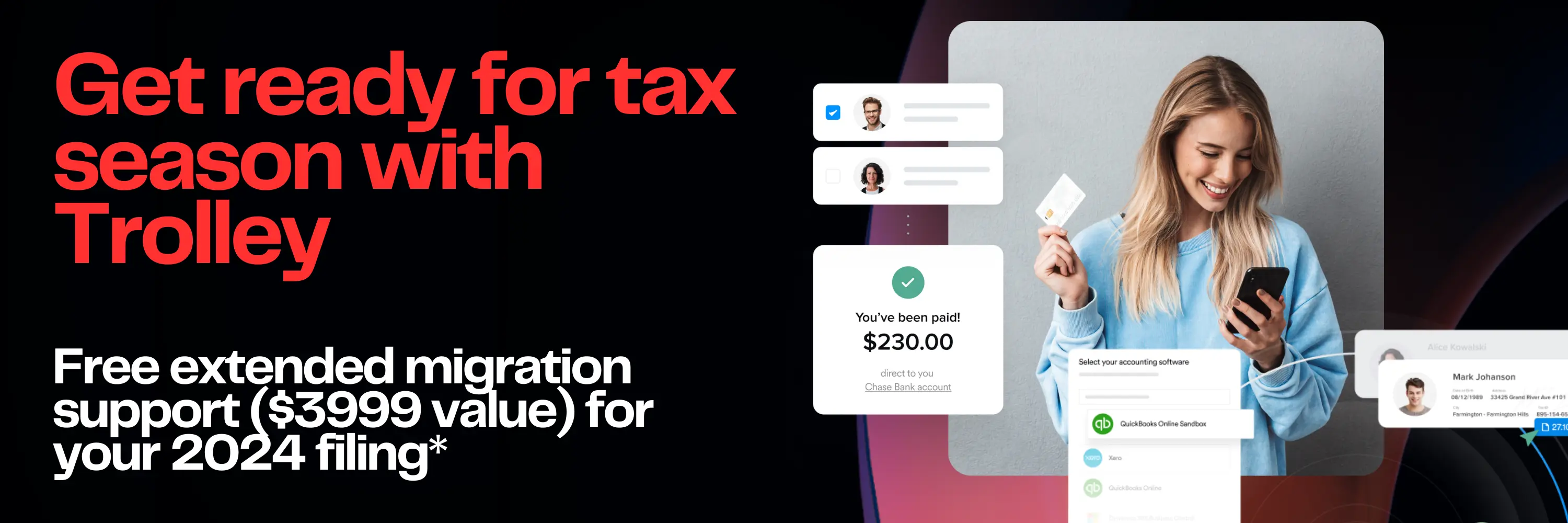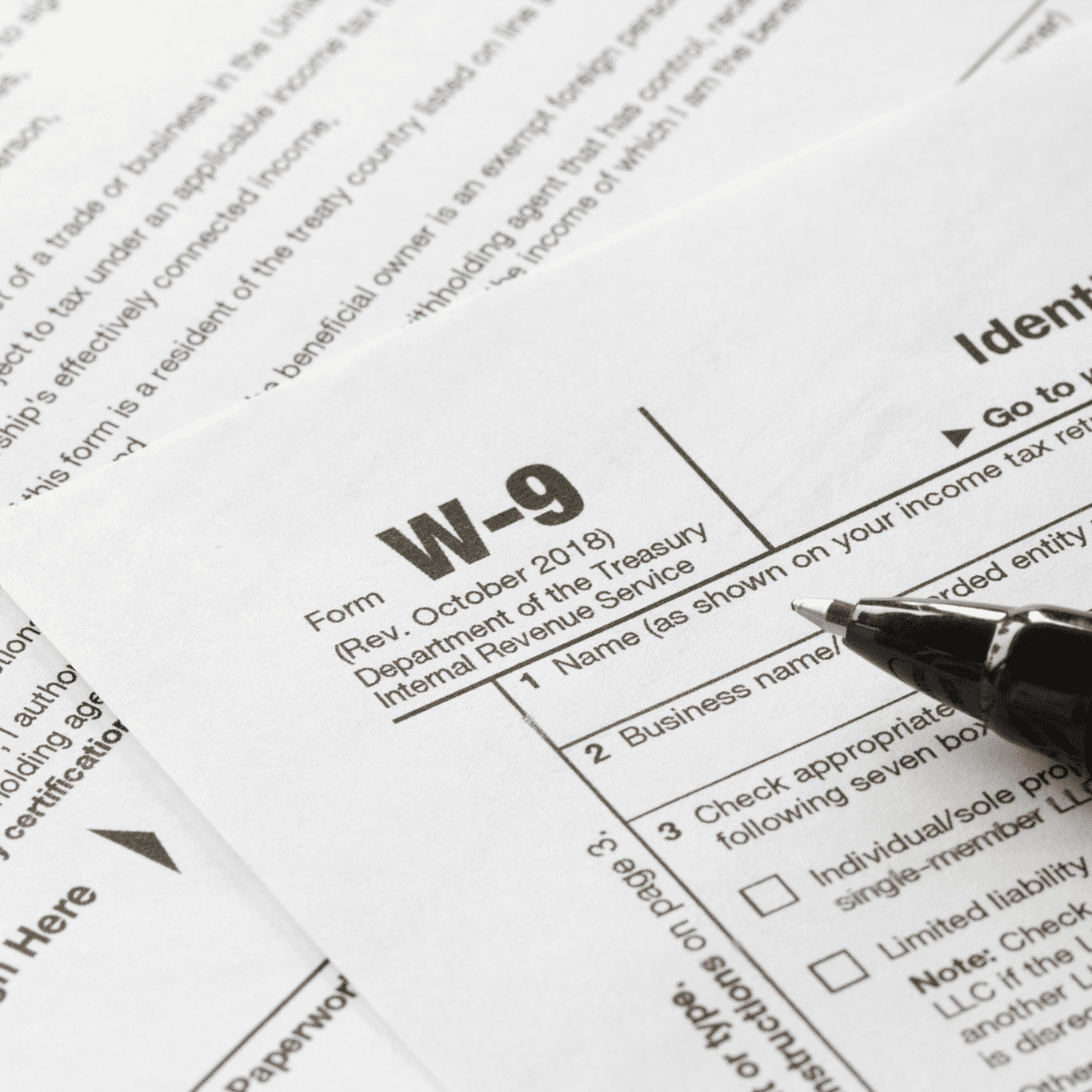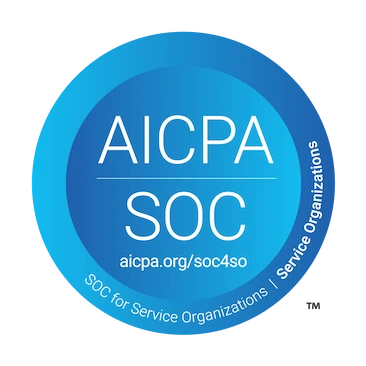The IRS W-9 form is an important tax document needed when doing business with vendors and independent contractors. The title of the W-9 form, Request for Taxpayer Identification Number and Certification, is clear in its purpose—it’s used to get critical tax information from your vendors.
All companies, institutions, and individuals paying independent contractors or freelancers for work (greater than $600 in calendar year) need to request and receive a completed W-9 form from the contractor.
While issued by the IRS, when you request a contractor complete form W-9, they are not actually completing it for the IRS. They are completing it to provide you and your company the information that you will need to report income to the IRS at a later date. This income will be reported to the contractor and filed with the IRS as a 1099.
On Form W-9, taxpayers provide a variety of information for tax reporting purposes. Although it one of the most common tax forms encountered in business, not everyone needs to file a W-9. There are also other tax forms with similar names and functions that are used in different scenarios. Knowing how and when to use each form is crucial.
Let’s dig into the IRS’s Form W-9, the Request for Taxpayer Identification Number and Certification.

This article covers
Form W-9 Explained
Form W-9 is a Request for Taxpayer Identification Number and Certification. The W-9 form asks the vendor to provide identifying information, including their name, address, and taxpayer identification number (TIN) to your company.
The purpose of the W-9 form is to establish a person or a vendor’s identity and correct taxable status. It’s not soley used for employment relationships. Companies who intend to pay a contractor or freelancer, a tax preparer working with a new client, or financial institutions opening a new account for a customer, all may all request a W-9 form to link their actions with a specific taxpayer.
Why and When IRS W-9 May Need to be Completed
The W-9 form must be completed by anyone who:
- Is not subject to W-2 employment (salaried employees), and
- Receives $600 or more in cash or non-cash income from your organization during the tax year.
In some instances, individuals may be asked to complete a W-9 in anticipation of future earnings. Note: Most vendor/independent contractor relationships are established with the expectation of earnings, so it can be practical to include a W-9 with other onboarding documents.
There are several typical scenarios where IRS Form W-9 is often requested. Let’s take a look at some of the most common:
- Independent Contractors: When your organization brings on an independent contractor, you will likely want to request that they complete a W-9 form. Organizations will often build this into their onboarding process, asking new contractors to complete various forms, such as a non-disclosure agreement and IRS Form W-9.
- Freelancers: The gig economy has boomed in recent years! As a result, freelancers (a form of independent contractors) are turning to online platforms and marketplaces to build and manage client relationships and handle payments. Many of these platforms will need the freelancer to provide a Request for Taxpayer Identification Number and Certification before they will issue payment. If your company utilizes freelancers through these platforms, they usually handle the issuance of tax documents to the individual freelancers hired through the platform.
- Financial Institutions: It is common for banks and financial institutions to request account holders complete a W-9 when opening their accounts. This request allows them to report any interest, dividends, and other income on a future 1099 form.
Even if someone is beginning a relationship with a financial institution that does not involve an account that would generate interest or dividends, a W-9 is often requested. This common practice is in anticipation of future accounts they may open with their institution.
While these are the most common scenarios, this is not an all-inclusive list. Please see the IRS’s instructions on Form W-9 for more information.
When Not to Complete Form W-9
While a W-9 is a fairly standard and basic form, it has future tax implications that are important to consider. Business leadership has a responsibility to ensure they are requesting and filing the right tax forms from their vendors.
To prevent creating tax trouble down the road, you should carefully consider the tax forms that you request in a given situation.
Establishing an Employee/Employer Relationship
The key situation where you do not want to request a W-9 is when you are hiring an employee who will be receiving regular wages. A new employee would complete Form W-4 rather than Form W-9.
A W-4 provides information on an individual’s withholding allowances which your company then uses to determine how much federal income tax to withhold from the employees payroll. Mistaking these forms could leave an employee responsible for a significant tax liability and result in a review of your employment practices.
Requests by Non-Required Parties
IRS Form W-9 contains sensitive information that is valuable to the scammers and evil-doers of the world. There are those who will use deceptive methods to get personal information to steal identities or intercept tax refunds.
It is important to establish trust and credibility before requesting a W-9 from an independent contractor. Make sure they know you have a valid reason to be asking them to complete the form. Don’t be surprised if they are hesitant to provide their information or if they ask how it will be used. Transparent communication from the start will go a long way in establishing a positive relationship with those doing work for you.
How to Fill out a W-9 Form
Although a W-9 is relatively straightforward, it is an important document for future filings. To avoid tax headaches down the road, ensure you receive a correct and complete W-9.
Some standard tutorial information can be helpful when sending a W-9 form for completion. If a contractor does not know how to complete the form, lend a hand!
Steps for contractors to complete a W-9 Form
Step 1: Complete the personal information section of Form W-9. This part asks for your name, your business name, and other contact information.
Step 2: You’ll also list your organizational structure. Here, you will identify whether you are acting as an individual/sole proprietor, or a structured organization like an S-Corp, a C-Corp, a partnership, or an estate.
Though relatively uncommon, if you are entitled to any exemptions from backup withholding, list them here.
Step 3: The last portion of the identification section requests your address. Use the address associated with the entity you’ve provided information for on the form.
NOTE: An optional field for account numbers will generally be left blank aside from specific situations. You do not need to include your bank account information in this field.
Step 4: Fill out Part I of Form W-9, which requests your taxpayer identification number (TIN).
Acceptable TINs include a:
- Employer Identification Number (EIN);
- Social Security Number (SSN); or,
- An Individual Taxpayer Identification Number (ITIN).
NOTE: If you do not have a nine-digit TIN, a Form W-9 cannot be processed.
Step 5: Sign away!
The last part of Form W-9’s is the certification and declaration that the information is true and accurate. Form W-9 must be signed and dated by the person who will be receiving payment.
The Difference Between a W-8 & W-9 Tax Form
While similar in name, IRS Form W-8 is very different from Form W-9.
As the gig economy connects workers and companies across the globe, the lines of countries of residence and the countries they do business in are becoming blurred.
A W-8 BEN, Certificate of Foreign Status of Beneficial Owner for United States Tax Withholding and Reporting (Individuals), is a form that foreign individuals and organizations complete. This form intends to verify their country of residence and to ensure proper taxation.
If you are having work completed by a U.S. citizen operating and performing work in the U.S., use a W-9 form. W-8 forms are reserved for foreign citizens.
Summing It Up
IRS Form W-9 is among the most common tax documents out there and will become more common as on-demand, gig, freelance and other forms of work become more and more common.
There are a few key things to take way from this article:
- Request a W-9 when establishing a new working relationship with an independent contractor or freelancer;
- Explain why you are asking for a W-9 to build trust and limit identity theft concerns;
- Use the correct form for the situation; and,
- Help contractors complete Form W-9 correctly.
We welcome you to come back and refer to this guide on how to fill out a W-9 form whenever you need!
Simplify contractor tax compliance with Trolley
Trolley was built to make taxes easy for businesses and the people they pay. From automated W-8 & W-9 collection to the distribution of end-of-year IRS forms, Trolley takes the hassle out of 1042-S & 1099s so you can focus on what you do best.
See Trolley Tax in action: Take the Trolley Tax tour >
Book a demo of Trolley’s tax features today >
This article is intended for educational and informational purposes only. Through the publication of this article, Trolley is not offering any legal, taxation, or business advice. We strongly encourage each reader to consult with their relevant lawyer, accountant, or business advisors with respect to the content of this post. Trolley assumes no liability for any actions taken based on the content of this or other articles.












